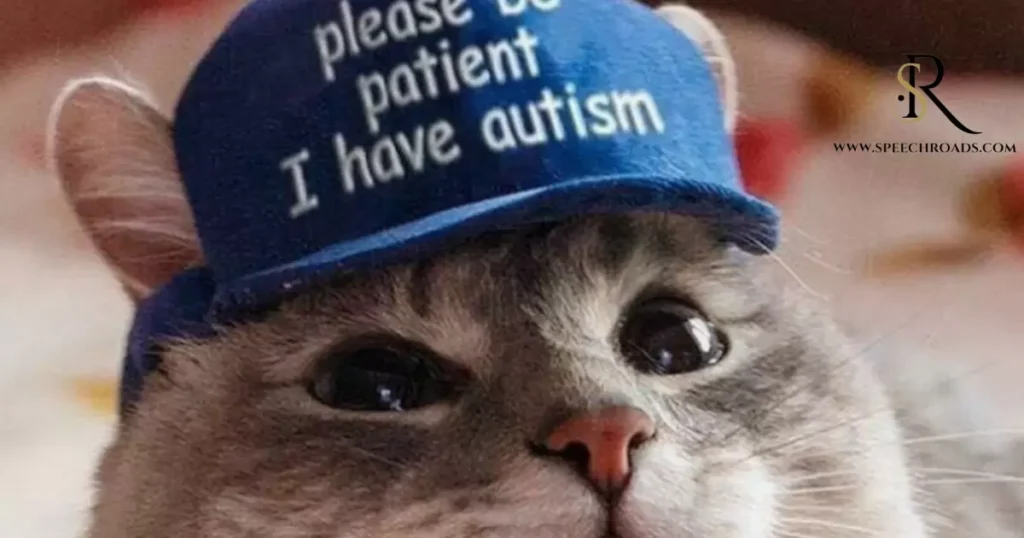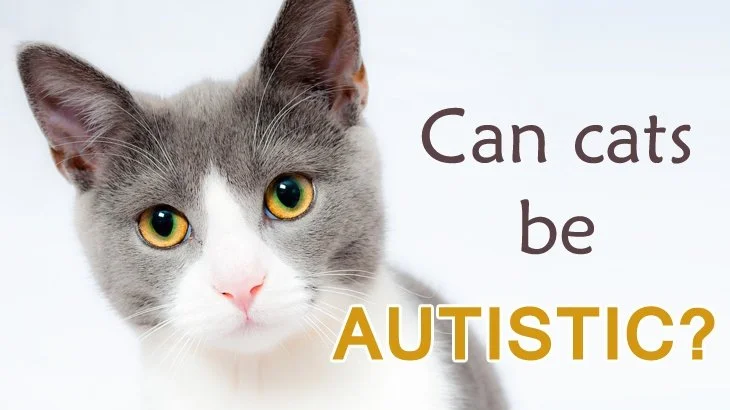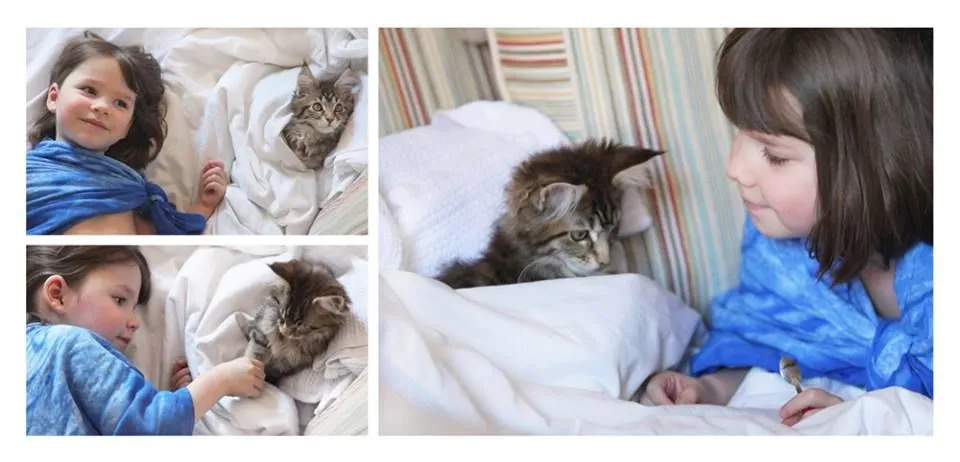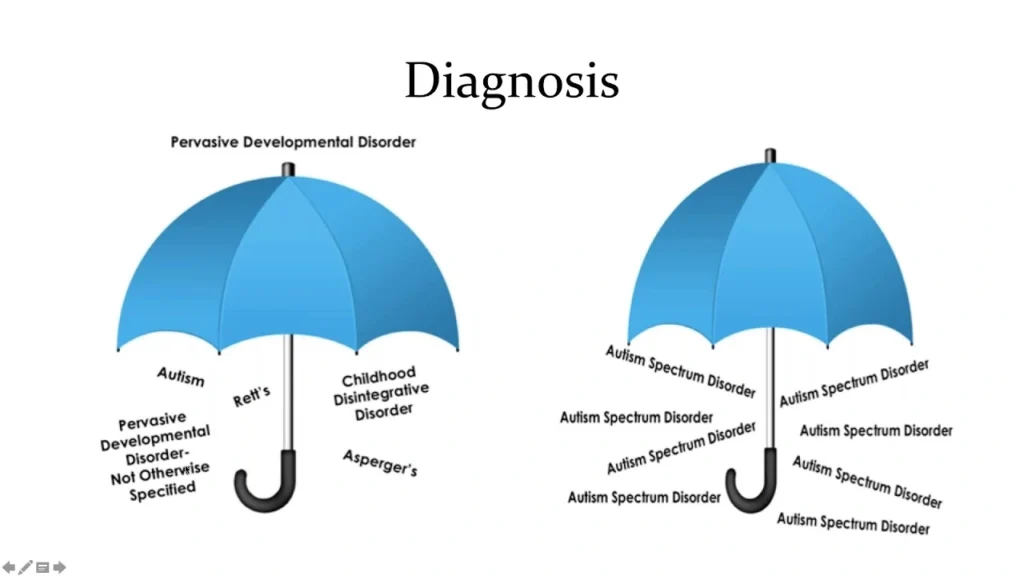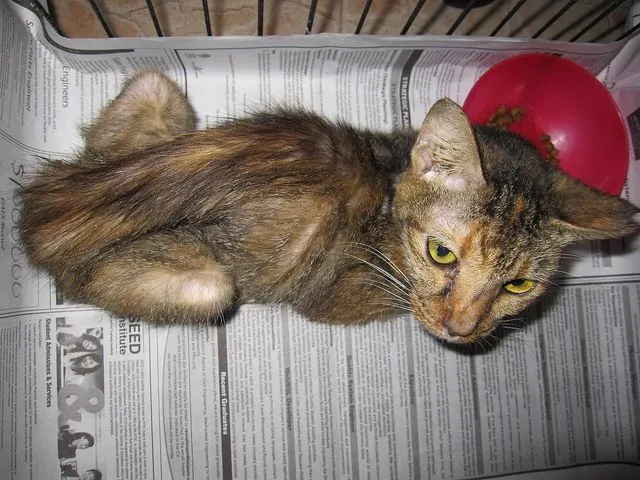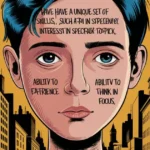Introduction
Have you ever noticed your cat conducting repetitive behaviors or having problems communicating?
Those can be signs and symptoms that your tom cat pal is on the autism spectrum.
Even as cat autism is not as extensively identified or studied as human autism.
In this blog we discussed can cats have autism? More and more veterinarians and researchers are exploring this interesting possibility.
The Emerging Evidence for Autism in Cats
Latest studies and case reviews have identified behaviors in cats which might be strikingly much like the ones seen in people with Autism Spectrum disorder (ASD). Some of the key behaviors that advocate the potential for a feline form of autism consist of:
- Repetitive Behaviors and routines: Cats with suspected autism were located undertaking repetitive movements, consisting of excessive grooming, pacing or chasing their tails for ever and ever.
- Aversion to modifications: These cats frequently show off full-size misery or discomfort while their surroundings or recurring is altered even in minor methods.
- Problems with Social interplay and conversation: Some “autistic” cats might also avoid eye contact. Have problems responding to their proprietors’ cues, and showcase reduced social engagement.
- Sensory Sensitivities: Certain cats on the spectrum seem hypersensitive to sensory stimuli which include loud noises or unique textures.
While the research in this region remains confined. These findings recommend that a tom cat form of autism may indeed exist. However more complete studies are needed to completely understand the capability for ASD in cats and establish clean diagnostic criteria.
Potential Causes of Autism in Cats
As with human autism, the exact causes of ASD in cats are not but completely understood. Researchers are investigating numerous capability factors which can contribute to the development of this condition in felines:
- Genetic Predisposition: Studies have indicated that certain genetic variations may increase the risk of autism in cats. Much like the genetic hyperlinks observed in human ASD.
- Environmental elements: Exposure to pollution, infections or other environmental stressors throughout early mind development may additionally play a role inside the manifestation of autistic developments in cats.
- Disruptions to mind improvement: Disturbances in the normal development and enterprise of the tom cat mind may want to potentially result in the emergence of autistic behaviors.
It’s essential to mention that the underlying causes of cat autism are nevertheless being actively investigated by researchers. The clinical network keeps exploring these and other potential elements.
Recognizing the Signs of Autism in Cats
Identifying the signs of autism in cats can be difficult. As the symptoms can range broadly and can overlap with other conditions. A number of the key behavioral and social signs which could propose a cat is on the autism spectrum encompass:
- Repetitive Behaviors: Immoderate grooming, pacing, tail chasing or other repetitive, reputedly purposeless moves.
- Issue Adapting to exchange: Vast distress or soreness while the cat’s surroundings, habitual or social interactions are altered.
- Aversion to Being Held or Cuddled: Cats with autism may additionally actively keep away from physical touch and like to hold their private area.
- Lack of Eye touch or communication: Reduced or absent eye contact as well as problems in responding to their owner’s cues or beginning interactions.
- Sensory Sensitivities: Heightened reactions to certain sounds, textures or other sensory stimuli that won’t trouble other cats.
It’s crucial to notice that not all “autistic” cats will exhibit the same behaviors. Some of those symptoms may also be related to other underlying situations. Consequently, a comprehensive assessment by way of a veterinarian is critical to determine if a cat’s conduct is indicative of autism or some other difficulty.
Supporting Cats with Autism Spectrum Disorder
As the attention of autism in cats grows. Pet proprietors and veterinary professionals are exploring approaches to better accommodate and guide those tom cat companions. Some strategies that may assist include:
- Retaining a consistent habitual: Imparting a predictable and strong environment can assist reduce strain and pain for cats at the autism spectrum.
- Developing a relaxed, Low-Stimulation surroundings: LLowering exposure to loud noises, shiny lights and different sensory triggers can assist create a soothing and secure space for the cat.
- Figuring out and keeping off Triggers: Paying in interest to the cat’s behavior and recognizing situations or stimuli that cause distress can assist owners manipulate the cat’s surroundings and limit meltdowns.
- Using effective Reinforcement training: Gentle, praise-primarily based training can help construct consideration, communication and coping abilities in cats with autism.
- Consulting Veterinary professionals: Looking for guidance from veterinarians and animal behaviorists who concentrate on tom cat autism can offer priceless support and personalized care techniques.
With the proper motels and support cats with autism can thrive and stay satisfied, gratifying lives. As researchers keep exploring this captivating subject matter. The popularity and understanding of autism in our feline companions is possible to develop within the years yet to come.
Diagnosis and Assist
Identifying pussycat autism can be tough. As the signs can range broadly and can overlap with different situations. A comprehensive assessment through a veterinarian probably inclusive of behavioral checks and ruling out other medical troubles. Is essential for a proper prognosis.
Once a cat is suspected of being at the autism spectrum proprietors and veterinary specialists can explore techniques to help the cat’s nicely-being which include:
- Maintaining a consistent routine and environment
- Lowering exposure to sensory triggers
- The use of tremendous reinforcement education
- Consulting with veterinary specialists who focus on tom cat behavior and autism
With the proper inns and guide cats with autism can thrive and live glad, gratifying lives. As studies on this vicinity keep evolving our knowledge of feline autism is probably to deepen within the future years.
The Debate Around Feline Autism
- Evidence for Feline Autism:
- A few veterinary behaviorists and researchers have found cats displaying behaviors similar to the core functions of Autism Spectrum sickness (ASD) in people. Including repetitive behaviors, aversion to alternate and social/communique demanding situations.
- There are a handful of case reviews and small-scale studies which have defined cats with those autism-like trends.
- Rising studies have diagnosed capability genetic and neurological similarities between tom cat and human ASD that warrant similar investigation.
2. Skepticism and challenges:
- Many veterinary experts stay careful about definitively diagnosing “feline Autism” because of the complexity and heterogeneity of ASD in people.
- There may be a lack of huge-scale, properly-designed studies that have conclusively established the life of a true tom cat equivalent to human autism.
- Differentiating autism-like behaviors from different tom cat behavioral troubles or clinical situations may be challenging. Mainly to concerns about potential over-analysis.
- Some researchers argue that the observed behaviors in cats can be better explained by different recognised situations. Which include tension, compulsive problems or well known sensory processing differences. Instead of an awesome “pussycat Autism” syndrome.
Cutting-edge Consensus and future directions
At present, the consensus amongst most veterinary professionals is that even as there are fascinating similarities among sure pussycat behaviors and human ASD. The lifestyles of a discrete “pussycat Autism” disease has not been conclusively validated. however the field is actively evolving:
- Ongoing research is geared toward growing greater strong diagnostic standards. Standardized assessment equipment and a better knowledge of the underlying neurological and genetic foundation of these discovered tom cat behaviors.
- As the studies advances a clearer photograph of whether or not a real pussycat equal to human autism exists. Whether those behaviors constitute a different type of neurodevelopmental or behavioral circumstance in cats can also emerge.
- In the intervening time veterinary professionals are operating to offer supportive care and lodges for cats showing autism-like tendencies. Although a proper diagnosis remains elusive.
Possible Explanations for Feline Autism
Given the continuing debate across the life of a real “feline Autism” circumstance researchers and veterinary experts have proposed several viable explanations for the autism-like behaviors discovered in a few cats. Right here are a number of the leading hypotheses:
- Neurodevelopmental Disorders in Cats:
- Whilst the term “feline Autism” is generally used a few professionals suggest that the determined behaviors can be better characterized as a broader neurodevelopmental ailment in cats distinct from human ASD.
- These situations may want to involve differences inside the development and features of the tom cat mind. Leading to behavioral and sensory processing demanding situations similar to but now not always equal to human autism.
2. Anxiety and Compulsive Disorders:
- The various behavioral trends related to “tom cat Autism,” inclusive of repetitive behaviors, aversion to exchange and social withdrawal. Also can be observed in cats with tension, obsessive-compulsive or other behavioral disorders.
- Some researchers argue that those conditions may give an explanation for the found tom cat behaviors rather than an awesome “autism-like” syndrome.
3. Sensory Processing Differences:
- Cats are recognized to have heightened sensory competencies compared to people. A few people may also have particular sensitivities or variations in how they perceive and respond to diverse sensory stimuli.
- These sensory processing differences may want to contribute to the improvement of behaviors that resemble certain factors of human autism. Inclusive of avoiding loud noises or aversions to particular textures.
4. Genetic and Neurological elements:
- Rising studies have diagnosed capacity genetic and neurological similarities among feline and human ASD. Suggesting that there may be a biological foundation for a number of the discovered behaviors.
- However, the particular genetic variants, neurological mechanisms and their relationships to the behavioral trends are nonetheless under research.
5.Environmental Influences::
- As with human autism, environmental factors which include exposure to pollutants, infections or different stressors all through important stages of development. Play a position in shaping the behavioral and neurological traits observed in some cats.
It’s crucial to be aware that those feasible motives aren’t jointly exclusive. An aggregate of things may also make contributions to the complicated and varied behaviors seen in cats exhibiting autism-like developments.
Ongoing studies collaboration among veterinary specialists and the continuing exploration of these hypotheses may be crucial in advancing our knowledge of the potential neurological and behavioral variations in cats. Whether a real “tom cat Autism” circumstance can be reliably recognized and characterized.
FAQ’s
What are some signs that my cat may have autism-like behaviors?
Some signs that your cat may have autism-like behaviors include difficulty with social interactions, repetitive behaviors, being hypersensitive to certain stimuli, and displaying anxiety or other behavioral conditions.
Is there any treatment available for cats with autism-like behaviors?
While there is no specific treatment for autism in cats, a veterinarian or animal behaviorist can work with you to develop a plan that addresses any underlying conditions and helps improve your cat’s quality of life.
Can cats have ADHD or autism?
Cats and dogs cannot have autism or ADHD.
Can cats have OCD?
Cats do, too.
Conclusion
In conclusion the controversy surrounding the life of pussycat Autism maintains.
More complete research is wanted to definitively set up it as a recognized condition in veterinary therapy.
Whilst the similarities among feline and human behaviors are intriguing.
The modern-day clinical consensus is that the proof isn’t always yet conclusive.
The destiny may additionally deliver extra clarity as the know-how of neurological and behavioral variations in cats continues to adapt.

